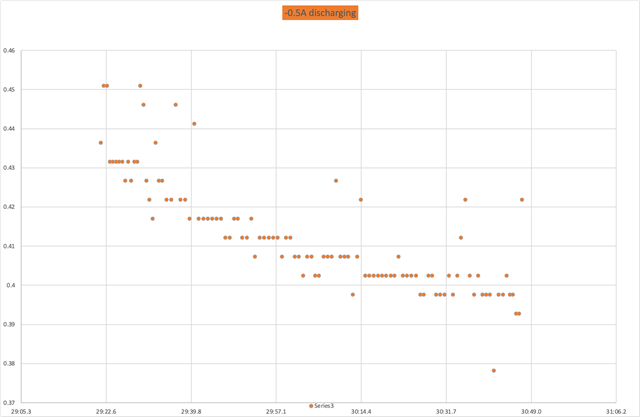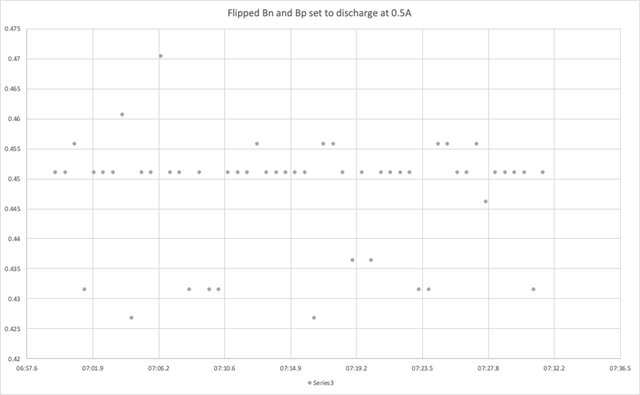Hello,
I am building a battery charger and discharger, and I am using a OPA549 chip to supply current to the battery to charge and discharge the battery. Below is the schematic I am using currently.

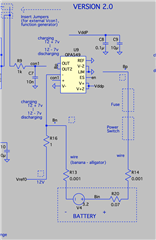
I have a reference voltage of 12 Volts provide by the bottom opamp, and this is biasing the Vref0 node to be 12V, and I have a upper opamp to biase the Bn node to biase the voltage so that I can either charge and discharge the battery by controlling the direction of current. For example for charging of 0.5A, I bias the Bn to be 12.5V, so that positive 0.5A current can flow through the battery. This charging operation is working as intended. However, when I bias the Bn node to be 11.5V to discharge the battery for 0.5A(so current direction is reversed), the power supply is pulling 1A when it should be pulling 0.5A. The power supply I am using is capable of supplying 6As at 30V, so that is not the issue for the supply. I am just wondering what could be the case for this issue?. In summary, when I discharge the battery, the power supply is pulling double the current that I intended to pull. If it works for one direction, it should work for other direction as well right? When this happens, the Bn node is still biased correctly, but drawing currents starts decreasing as shown in the graph below, but charging seems to be fine. Could you help me address this issue for me?
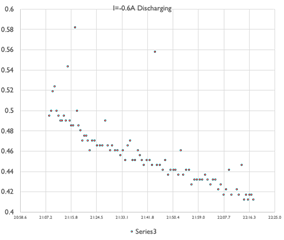
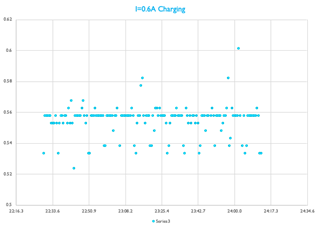
Any input of your expertise would be greatly appreciated
Thank you so much
Young



